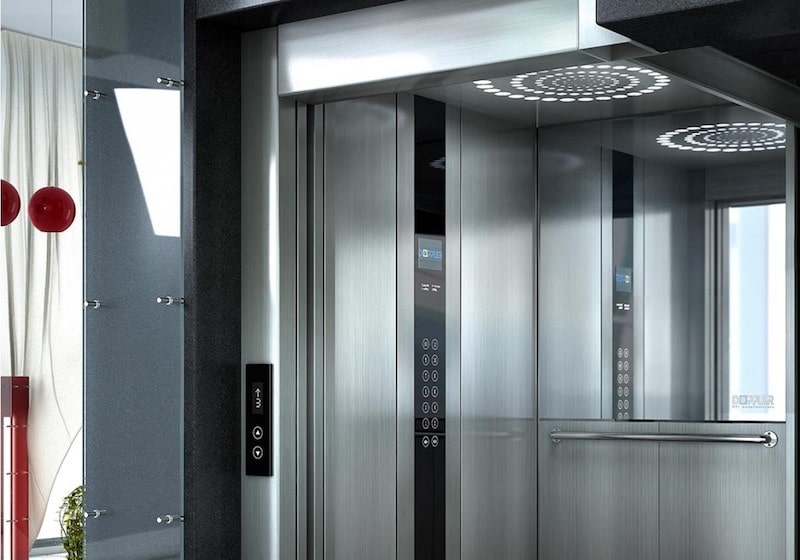Discover Trustworthy Lift Repair Near Me for Rapid and Affordable Service
Discover Trustworthy Lift Repair Near Me for Rapid and Affordable Service
Blog Article
Digging Into the Globe of Lifts: Common Concerns Dealt With by Various Lift Devices
As we browse through the vertical transportation systems of contemporary structures, lifts stand out as an important part of our daily lives. From hydraulic elevators to traction systems and machine-room-less layouts, each lift type comes with its set of typical problems.
Hydraulic Lifts
Hydraulic lifts, frequently preferred for low-rise structures, utilize fluid pressure to manage the activity of the lift car (lift repair companies). This mechanism involves a hydraulic pump pushing oil into a cylinder, triggering the lift to relocate the wanted direction. While hydraulic elevators are understood for their silent and smooth procedure, they do come with their own set of common issues
One prevalent problem with hydraulic elevators is oil leak. Furthermore, issues with the control system, such as defective valves or a malfunctioning pump, can create disturbances in the elevator's activity.
Normal maintenance and prompt repairs are necessary to ensure the smooth performance of hydraulic lifts. By attending to these typical issues proactively, structure proprietors can reduce downtime and ensure the safety and efficiency of their upright transport system.
Traction Lifts
When thinking about vertical transport systems in buildings, another usual kind apart from hydraulic lifts is the traction lift. Traction lifts run utilizing a system of ropes and weights that move the lift cars and truck by grasping onto the hoist ropes. This device enables for smoother and quicker upright transportation contrasted to hydraulic systems.
One of the common problems faced by grip elevators is rope wear. The continuous motion of the ropes within the traction system can cause tear and use with time, possibly triggering the elevator to malfunction or come to be dangerous for usage. Normal examinations and maintenance of the ropes are important to make sure the lift's proper performance and safety.
An additional issue that grip lifts may experience is associated to the control system. Problems with the control system can cause issues such as unpredictable activity, hold-ups in reaction times, or perhaps total shutdowns. Routine screening and upkeep of the control system are important to avoid such concerns and ensure the elevator's integrity.
Machine-Room-Less (MRL) Lifts

Among the crucial components of MRL lifts is the portable gearless traction machine that is mounted within the hoistway. This equipment effectively drives the elevator auto without the requirement for large tools discovered in typical grip lifts. Furthermore, MRL lifts normally use a weight system to balance the auto, further improving their energy effectiveness.
Despite their advantages, MRL lifts might encounter difficulties connected to repair and maintenance because of the constrained space for equipment setup. Ease of access for servicing parts within the shaft can be restricted, requiring specialized training for specialists. Appropriate upkeep timetables and normal inspections are crucial to guarantee the continued smooth procedure of MRL lifts.
Overloading and Weight Limitation Issues
Are lifts outfitted to take care of excess weight loads efficiently and safely? Straining and weight restriction concerns are critical concerns in elevator operations. Lift suppliers layout raises with details weight abilities to make certain guest safety and security and visit their website tools long life. Surpassing these weight restrictions can lead to various problems, consisting of mechanical failings, hold-ups, visit this page and security hazards.
When elevators are overloaded, it places extreme strain on the electric motor, wires, and other components, possibly creating malfunctions or malfunctions. If they spot excess weight, safety and security systems such as sensors and overload sensing units are in place to prevent lifts from moving. Furthermore, exceeding weight restrictions can result in raised energy intake and deterioration on the lift system.
To alleviate overloading problems, constructing managers need to prominently present weight limits in lifts and educate passengers on the importance of sticking to these constraints - lift repair companies. Routine upkeep checks by qualified specialists can likewise aid ensure that elevators are running within risk-free weight parameters. By dealing with overloading and weight limit problems proactively, structure owners can improve lift safety and effectiveness
Electric System Failings
Exceeding weight limitations in elevators can not just bring about mechanical issues however additionally possibly add to electric system failures within the lift infrastructure. Electrical system failings are a critical issue in lift procedure, as they can cause unforeseen closures, breakdowns, or perhaps safety risks. One typical electrical problem is the overheating of elements because of too much existing circulation created by straining the lift past its additional hints ability. This can cause harm to the circuitry, control, or electric motor systems, causing pricey repairs and downtime.
Moreover, power rises or variations in the electrical supply can also disrupt the lift's operation, affecting its performance and safety and security. These electric disruptions can harm sensitive elevator parts such as control panels, circuit boards, or sensors, resulting in system failings. Routine maintenance and examinations are vital to determine and address possible electrical concerns without delay, making sure the effective and safe procedure of elevator systems. By adhering to weight restrictions and carrying out regular electrical system checks, structure owners can minimize the danger of electric failures in lifts.
Conclusion

Hydraulic elevators, usually chosen for low-rise structures, use fluid stress to manage the activity of the elevator auto.When taking into consideration vertical transportation systems in buildings, an additional typical kind aside from hydraulic lifts is the grip elevator. Grip lifts run using a system of ropes and weights that relocate the elevator auto by gripping onto the hoist ropes. Unlike standard lifts that require a different equipment space to house the equipment, MRL elevators incorporate many of the components within the shaft, getting rid of the demand for a devoted maker room.In verdict, elevators face typical concerns such as hydraulic breakdowns, traction system failures, and electric system problems.
Report this page